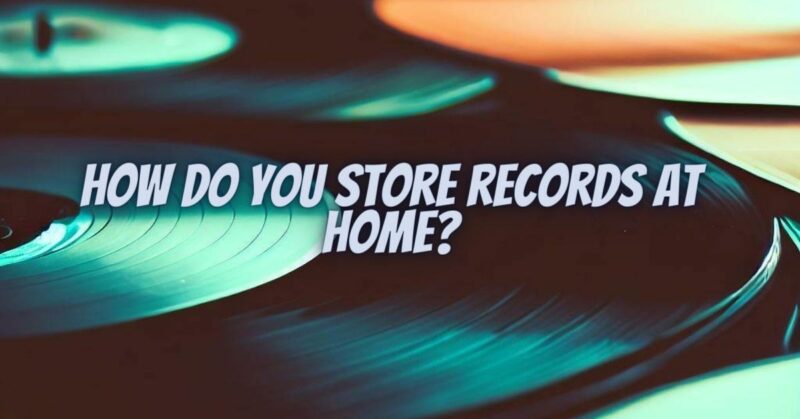Vinyl records, cherished by audiophiles and music enthusiasts, require proper storage to maintain their condition and longevity. Whether you’re a dedicated collector or a casual listener, knowing how to store records at home is essential to ensure your vinyl collection remains in pristine shape. In this comprehensive guide, we’ll explore the best practices and tips for storing vinyl records to protect them from damage and preserve their sound quality.
Why Proper Record Storage Matters
Storing your vinyl records correctly is vital for several reasons:
- Preservation of Sound Quality: Proper storage prevents warping, scratches, and dust accumulation, which can negatively impact the playback quality of your records.
- Protection from Damage: Storing records improperly can result in physical damage, affecting their value and collectibility.
- Longevity: Proper storage prolongs the lifespan of your vinyl records, allowing you to enjoy your collection for years to come.
Materials and Tools You’ll Need
Before you start storing your vinyl records, gather the following materials and tools:
- Vinyl records: Your collection of vinyl records, whether they are LPs (long-playing records) or singles.
- Record sleeves: High-quality inner sleeves made of polyethylene or polypropylene to protect the records from dust and static.
- Outer record sleeves: These protect the album covers and are typically made of polyethylene or polypropylene.
- Record crates or shelving: A safe and sturdy place to store your records, such as record crates, shelves, or dedicated record storage furniture.
- Dehumidifier (optional): If you live in a humid climate, consider using a dehumidifier to maintain the optimal humidity level.
- Record cleaning kit: A record brush or anti-static brush to remove dust and dirt from records before playback.
Step-by-Step Guide to Storing Records at Home
Follow these steps to store your vinyl records properly at home:
Step 1: Clean Your Records
Before storing your records, it’s essential to ensure they are clean. Use a record brush or anti-static brush to remove dust and debris from both sides of each record.
Step 2: Replace Inner Sleeves
If your records are still in paper inner sleeves, consider replacing them with high-quality polyethylene or polypropylene inner sleeves. These protect against static and paper sleeve abrasions, which can scratch the vinyl.
Step 3: Place Records in Outer Sleeves
Slide each record into an outer polyethylene or polypropylene sleeve. These sleeves protect the album cover and prevent shelf wear.
Step 4: Organize Your Collection
Sort and organize your records by genre, artist, or any other system that makes sense to you. This helps you locate specific records easily and reduces handling.
Step 5: Choose the Right Storage Option
Select a storage solution that suits your space and preferences. Options include:
- Record crates: These are portable and come in various styles, materials, and sizes.
- Shelves: Dedicated record storage shelves or bookshelves with adjustable shelves work well.
- Storage furniture: Consider investing in record storage furniture designed specifically for vinyl collections.
Step 6: Store Upright and Avoid Overcrowding
Store your records upright, like books on a shelf, rather than stacking them horizontally. Overcrowding can cause warping and damage. Use dividers or bookends to prevent leaning or falling records.
Step 7: Maintain Ideal Temperature and Humidity
Store your records in a climate-controlled environment with a temperature between 60-70°F (15-21°C) and a relative humidity level of 35-45%. Extreme temperature fluctuations and high humidity can damage records.
Step 8: Keep Records Away from Direct Sunlight
Avoid exposing your records to direct sunlight, as it can warp and fade the album covers.
Step 9: Rotate Your Collection
Periodically rotate your collection to prevent prolonged pressure on the records’ grooves. This also helps distribute wear evenly.
Step 10: Handle Records Carefully
When handling records, always hold them by the edges and avoid touching the playing surface. Fingerprints and oils can affect playback and cause permanent damage.
Step 11: Regular Maintenance
Perform regular checks for signs of warping, mold, or mildew. If you live in a humid climate, consider using a dehumidifier in your storage area.
Properly storing vinyl records at home is essential for preserving their condition and sound quality. By following the steps outlined in this comprehensive guide and investing in quality storage materials, you can ensure your vinyl collection remains in excellent shape for years to come. Enjoy your records, both for their sonic qualities and their timeless charm as physical artifacts of musical history.


